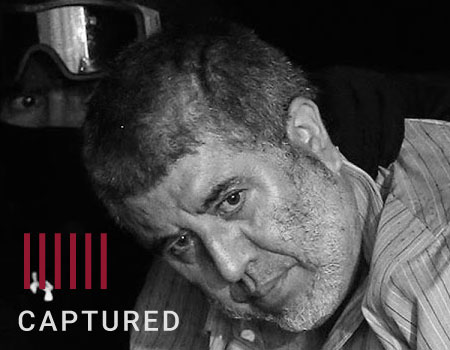Vicente Carrillo Fuentes, alias “El Viceroy,” inherited the Juárez Cartel after his brother died in 1997. At that point, the cartel was the most powerful drug trafficking organization in Mexico.
Before his arrest on October 9, 2014, El Viceroy was struggling to keep control over the cartel territory, fighting rival organizations as well as internal enemies. However, he failed to form a federation-like structure the way his brother had, and remained in constant conflict over territory with his rivals, particularly the Sinaloa Cartel. Nevertheless, his old connections with the police and local politicians, as well the increased use of local gangs with strong ties to the United States (such as Barrio Azteca) helped to keep the organization together despite growing pressure.
History
Born in Navolato, Sinaloa, El Viceroy took over the Juárez Cartel in 1997, together with José Esparragoza, alias “El Azul.” They assumed the group’s leadership after Vicente’s brother Amado Carrillo Fuentes, better known as “El Señor de los Cielos,” died during plastic surgery. When El Viceroy took control, the Juárez Cartel was Mexico’s most powerful drug trafficking organization.
El Viceroy had been wanted by the FBI since August 16, 2000, after a federal jury in Texas charged him with several crimes, including murder, drug trafficking, and money laundering. The US government offered a reward of up to $5 million for information that would lead to his capture. Mexico’s Attorney General’s Office offered a reward of up to 30 million pesos, declaring him one of the 121 criminals most wanted by federal authorities.
The Juárez Cartel was responsible for transporting multiple tons of cocaine from Colombia through Mexico to the United States. During the leadership of Vicente’s brother Amado, the cartel had dominated the business, largely thanks to its links with federal authorities that offered the group protection. Vicente continued with drug trafficking on a smaller scale, but in a much more violent environment.
The Juárez Cartel had been allied with the Sinaloa Cartel until 2004, when Joaquín ‘El Chapo’ Guzmán allegedly ordered the killing of El Viceroy’s brother, Rodolfo Carrillo Fuentes. Subsequently, El Viceroy ordered the murder of El Chapo’s brother, who was in prison at the time.
The end of the alliance triggered a violent war between the two cartels, which had already fought over drug markets and trafficking routes. As of 2007, El Viceroy also faced a conflict with the Gulf Cartel, which for several years turned his hometown of Ciudad Juárez into the world’s most violent city and left at least 8,000 dead.
In order to confront the Sinaloa Cartel and its hitmen, known as “Gente Nueva,” El Viceroy strengthened the armed wing “La Línea” and the US-based gang “Barrio Azteca.” But this was not enough to defeat El Chapo Guzmán’s cartel, which presumably enjoyed the support of federal authorities. Eventually, the Sinaloa Cartel managed to weaken the Juárez Cartel and increased its own power, as La Linea and Barrio Azteca changed sides during the course of the fight.
After the alleged defeat, El Viceroy changed his name and appearance, and moved to the city of Torreón, Coahuila, where he was captured on October 9, 2014. He was sentenced to 28 years in prison. He is currently detained in a prison in Puente Grande in the state of Jalisco.
Criminal Activities
In 2000, a Texas federal jury charged El Viceroy with 46 criminal offences associated with drug trafficking and money laundering. He also faces charges of murder, carrying restricted military weapons, and establishing criminal organizations. He was also indicted on drug crimes by a New York federal court in 2009.
In addition, Mexico’s Attorney General’s Office claimed that El Viceroy controlled one of the most important cocaine, heroin, methamphetamine and marijuana trafficking routes between Mexico and the United States.
El Viceroy was known to be the most violent of the Carrillo Fuentes brothers. As noted in the book “Los Capos,” by Ricardo Ravelo, Vicente occasionally killed his enemies with his own hands and ordered them buried in mass graves. Sometimes they were buried alive. Moreover, the Juárez Cartel was the first criminal group to use car bombs in attacks against the police.
Geography
El Viceroy ran the Juárez Cartel from the border town in Chihuahua that gave the group its name: Ciudad Juárez.
After the group lost its influence in Chihuahua due to the conflict with the Sinaloa Cartel, El Viceroy fled to the city of Torreón in Coahuila.
During his time as head of the cartel, El Viceroy managed to control the activities of the cartel in more than a dozen states in the country.
Allies and Enemies
Up until 2004, the Juárez Cartel had maintained an alliance with the Sinaloa Cartel, but eventually turned into its biggest rival. The Gulf Cartel was also one of the enemies the Juárez Cartel confronted during the conflict in Ciudad Juárez.
In 2008, El Viceroy managed to establish one of the most crucial alliances in the fight against the Sinaloa Cartel by partnering with former allies of El Chapo, the Beltran Leyva Organization. Additionally, the Juárez Cartel was associated with the Zetas and drug suppliers in Colombia, such as the Revolutionary Armed Forces of Colombia (Fuerzas Armadas Revolucionarias de Colombia – FARC) and the United Self Defense Forces of Colombia (Autodefensas Unidas de Colombia – AUC).
Prospects
As the Carrillo Fuentes brothers personally controlled the Juárez Cartel, their deaths and arrests significantly weakened the organization. Nevertheless, small cells are still operating in Chihuahua and continue to fight the Sinaloa Cartel.
In 2015, US authorities issued a request for the extradition of El Viceroy. The request, however, was suspended, and at least for the time being, El Viceroy will remain in prison in Mexico.

